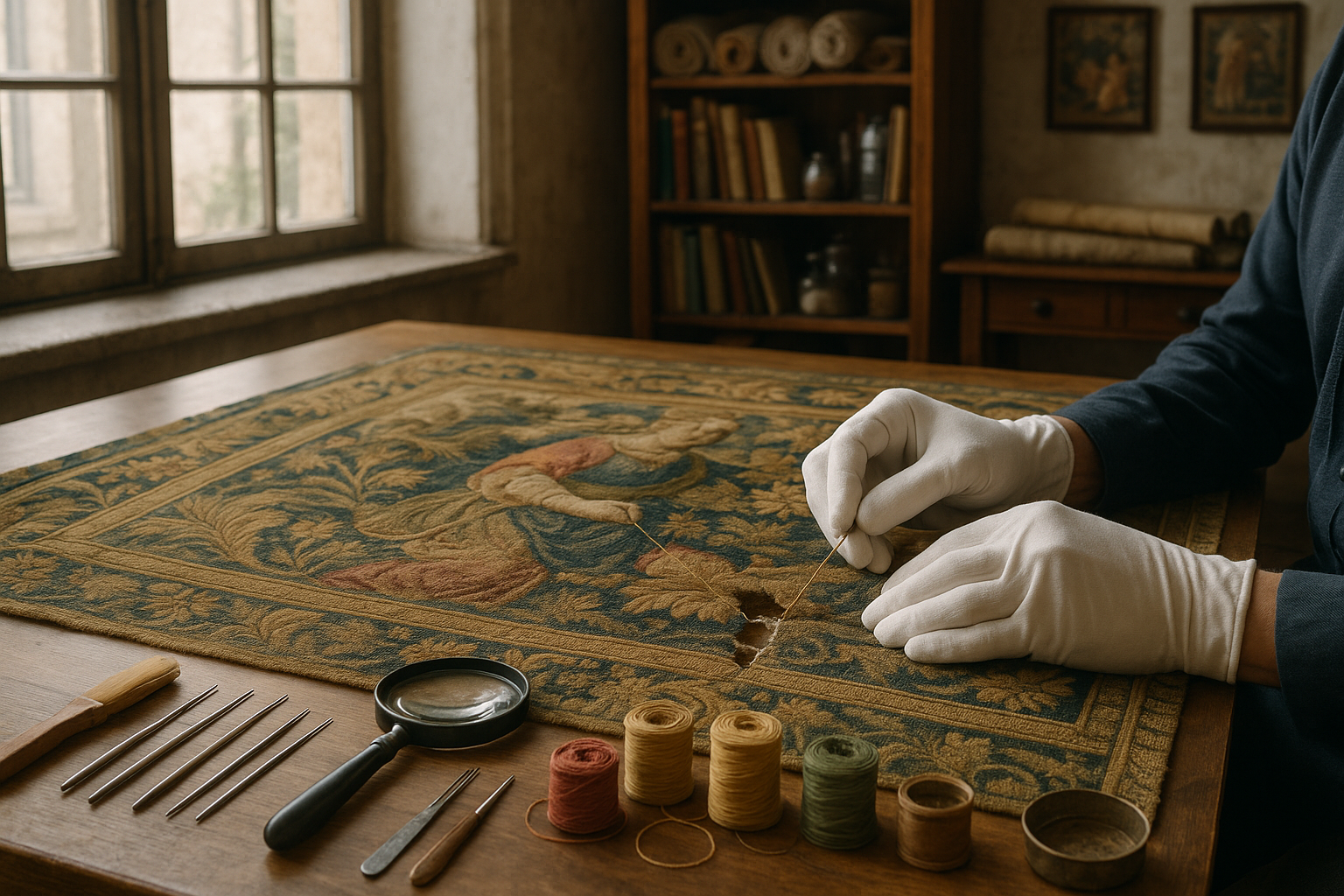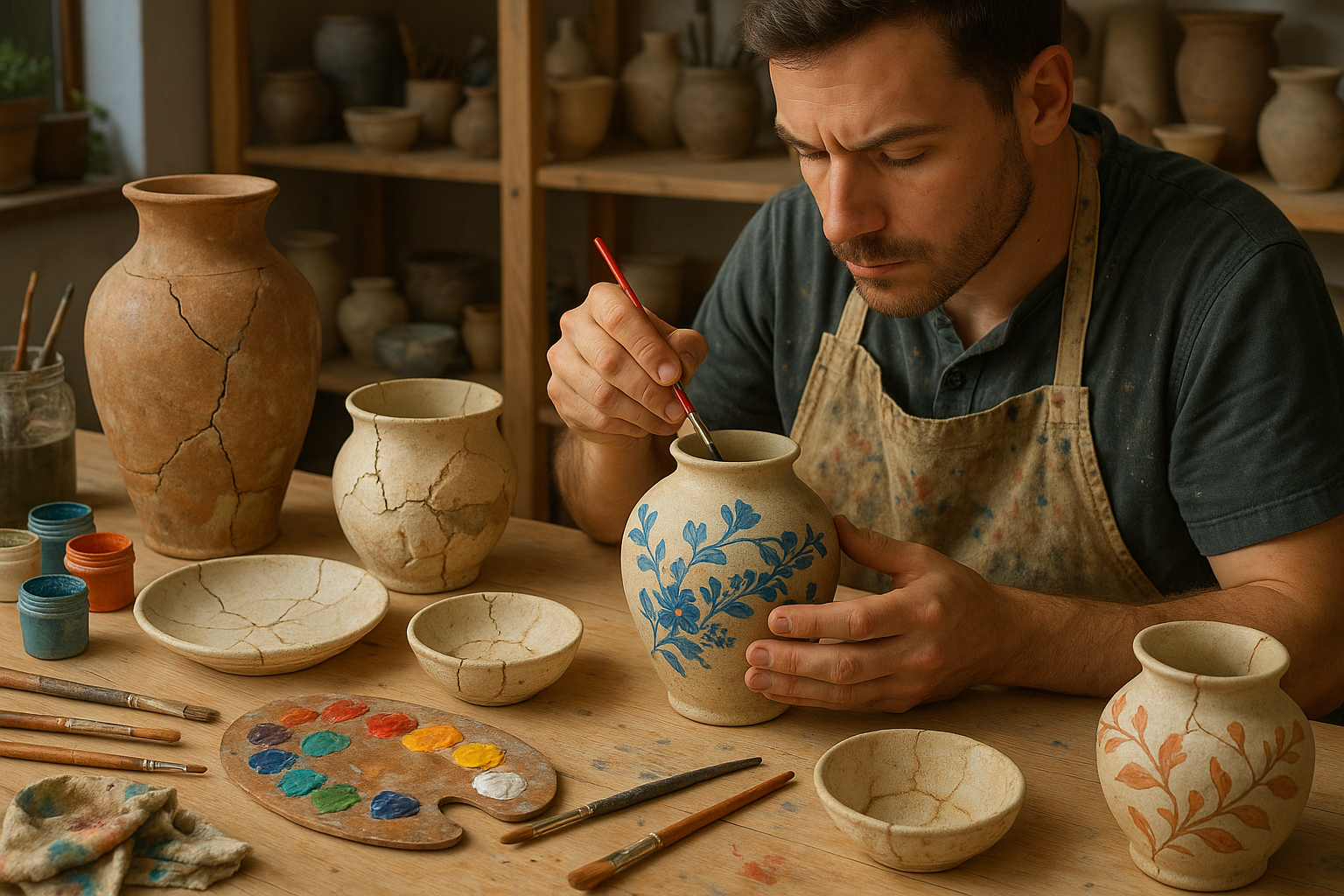In the quiet corners of grand museums and the lavish halls of historic estates, treasures of the past lie woven into intricate tapestries. These masterpieces, with their vivid storytelling and artistic finesse, have survived the test of time, silently narrating tales of yore. Yet, like any historical artifact, these precious fabrics are not immune to the ravages of time. Tears, wear, and deterioration threaten their grandeur. Restoring these tapestries to their original splendor is not just a task for the skilled conservator, but a responsibility to preserve history itself. 🏛️
The delicate art of tapestry restoration is both an art and a science. It requires an understanding of the fabric’s history, the weaver’s original intent, and the materials used centuries ago. For those entrusted with the task, it is a journey into the past, armed with modern techniques and a passion for preservation. The process is meticulous and demands patience, but the rewards—seeing the threads of history come alive once more—are unparalleled.
In this comprehensive guide, we delve into the world of tapestry restoration, offering expert tips and insights on repairing tears in these priceless historical textiles. Whether you’re a professional conservator, a history enthusiast, or a tapestry owner, this article will provide valuable knowledge on preserving these woven narratives for future generations. 🧵✨
To begin, we explore the essential preliminary steps of tapestry assessment. Understanding the tapestry’s age, origin, and the extent of damage is crucial in planning an effective restoration. We’ll discuss how to identify different types of fabric and the significance of historical context in choosing restoration methods.
Next, we will navigate through the delicate process of cleaning and preparing the tapestry for repair. This stage is critical, as improper cleaning can lead to further damage. We’ll provide guidelines on safe cleaning practices and the importance of choosing the right cleaning agents. Emphasizing the need for gentle techniques, we’ll highlight the use of specialized tools and the expertise required to ensure no harm comes to the fabric.
Once the tapestry is prepared, the intricate task of repair begins. Here, we’ll discuss various stitching techniques, from reweaving to patching, and the importance of color matching in thread selection. These methods are not merely functional; they must also respect the aesthetic integrity of the original piece. By drawing on real-world examples and expert interviews, we’ll illustrate how skilled artisans bring damaged tapestries back to life.
Conservation is not only about repairing damage but also about preventing future deterioration. We’ll examine the environmental factors that can affect tapestry longevity, such as humidity, light exposure, and pest control. Through practical tips, we’ll guide you on how to create a protective environment that ensures these historical treasures remain intact for years to come.
Finally, we’ll touch upon the ethical considerations in tapestry restoration. The balance between maintaining historical authenticity and implementing necessary repairs can be delicate. We’ll delve into discussions about preserving the tapestry’s narrative and the ethical implications of using modern materials in historical contexts.
This article serves as a roadmap for anyone invested in the art of tapestry restoration. By understanding the challenges and complexities involved, we can appreciate the dedication required to maintain these artifacts. Join us on this journey through time, and learn how the threads of history are carefully preserved with skill and passion. Let’s restore the splendor of the past, one stitch at a time. 🌟

Conclusion: Restoring the Splendor of Historical Tapestries
In this article, we’ve journeyed through the intricate world of historical tapestry restoration, exploring the delicate balance between preserving art and maintaining its historical integrity. We’ve delved into expert techniques, from identifying the types of tears and damages to applying specialized repair methods that respect the tapestry’s original craftsmanship. These ancient pieces are not just artworks; they are invaluable artifacts that tell stories of the past, reflecting the cultural and historical contexts of their times. 🏛️✨
Understanding the materials and weaving techniques used in historical tapestries is crucial. As we discussed, identifying the right restoration materials that closely match the original fibers is essential for ensuring seamless repairs. Employing techniques such as reweaving, patching, and conservation stitching allows us to mend these delicate fabrics without compromising their authenticity. It’s about more than just fixing a tear; it’s about breathing life back into a piece of history.
We’ve also emphasized the importance of ongoing maintenance and preventative care. Regular inspections and climate-controlled environments play significant roles in preserving these textiles for future generations. By implementing these practices, we not only extend the life of these tapestries but also honor the legacy of the artists and cultures they represent.
The importance of tapestry restoration extends beyond the confines of museums and galleries. These works inspire us and enrich our understanding of history, art, and the interconnectedness of cultures. By preserving them, we ensure that future generations have the opportunity to learn from and be inspired by these magnificent creations.
We encourage you to take an active role in the preservation of historical tapestries. Whether you’re a professional restorer, a museum curator, or simply an enthusiast, your efforts can make a significant difference. Consider supporting local museums, engaging in community preservation projects, or even embarking on your own restoration journey. 🤝
As you reflect on the insights shared in this article, we invite you to comment below with your thoughts or experiences in tapestry restoration. Sharing knowledge and experiences not only enriches our community but also fosters a deeper appreciation for the art and its preservation.
If you found this article insightful, please consider sharing it with others who might be interested in the art of tapestry restoration. Together, we can ensure that the splendor of these priceless historical tapestries continues to shine for generations to come. 🌟
For further reading and resources on tapestry restoration, feel free to explore the following links:
- Victoria and Albert Museum – Conserving Tapestries
- Getty Conservation Institute – Tapestry Conservation
Thank you for joining us on this exploration of tapestry restoration. Let’s continue to preserve the art of the past, one stitch at a time.
Make sure to verify the links to ensure they remain active and contain relevant content, as URLs can change over time. Feel free to expand or modify this structure based on your specific article details and audience engagement strategies.




